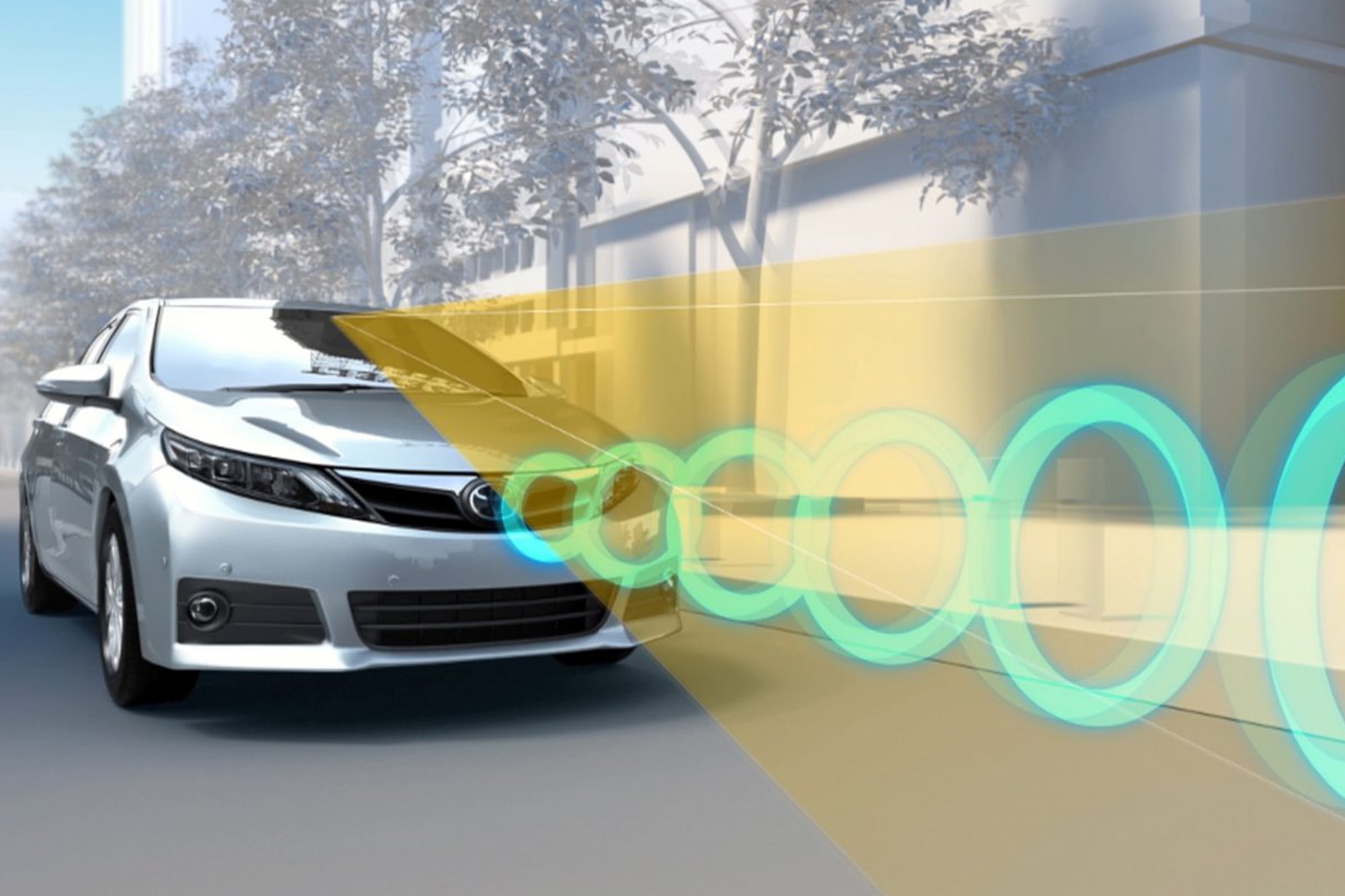What is Automatic Emergency Braking?
This driver-assistance feature will slow or stop your vehicle to mitigate or prevent a crash.
 Toyota
Toyota
An automatic emergency braking (AEB) system uses sensors such as radar, cameras, or lasers to monitor what’s around the vehicle and can anticipate an imminent crash. In such situations, the car alerts the driver with an audible, visual, and/or vibratory warning. If they don't take action or brake hard enough, AEB will kick in, applying the brakes to either prevent a collision or at least reduce the severity of the impact.
AEB is one of the common safety features in cars today. According to the Insurance Institute for Highway Safety, this feature
Are All AEB Systems Equal?
Some systems are more advanced than others. The best can detect pedestrians and cyclists as well as vehicles, and they also work when the car is in reverse, stopping you from hitting something while backing out of a parking spot or driveway.
On the lower end, a few AEB setups may have a speed restriction. For instance, the standard system on the base 2022 Chevrolet Tahoe will apply the brakes only if the vehicle is traveling below 50 mph; buyers can choose a higher trim level to get Enhanced Automatic Emergency Braking, which has no such limitation.
Drivers can usually disable AEB, though typically it reactivates with every time the car is started. Also, poor weather and darkness may limit the system’s effectiveness, as the sensors may not see clearly. Radar units on the front fascia or behind the grille can be obscured by a buildup of snow, ice, or dirt. Cameras tend to be mounted behind the windshield where the wiper blades can clear away such obstructions, but unlike radar, their performance is affected by glare and low light.
What Vehicles Have Automatic Emergency Braking?
AEB systems go by many names, including automated emergency braking, emergency brake assist, pre-collision assist, front assist, and collision mitigation braking system. Most 2022 model year vehicles come with the tech due to a government safety push. In 2015, the National Highway Traffic Safety Administration asked automakers to voluntarily make AEB standard equipment, given how effective it is in reducing crashes. A year later, 20 major manufacturers—representing more than 99 percent of the U.S. auto market—committed to the effort. They intend to provide the feature across their lineups by September 1, 2022.
In fact, it’s easier to count the new cars without standard AEB; this includes a handful of models with manual transmissions, such as the Subaru Impreza and WRX as well as the Porsche 718 twins, plus some older designs like the Dodge Charger and Chevrolet Camaro.
Written by humans.
Edited by humans.
 Andrew Ganz
Andrew GanzAndrew Ganz has had cars in his blood ever since he gnawed the paint off of a diecast model as a toddler. After growing up in Dallas, Texas, he earned a journalism degree, worked in public relations for two manufacturers, and served as an editor for a luxury-lifestyle print publication and several well-known automotive websites. In his free time, Andrew loves exploring the Rocky Mountains' best back roads—when he’s not browsing ads for his next car purchase.
Related articles
View more related articles